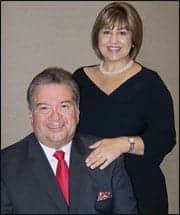By Tina Soika
Your practice is coasting. You know that its sales could be, indeed should be, increasing. You are getting good ideas that would give you greater success, and you know that you should probably implement them.
But something is holding you back. You are not sure what it is, but you cannot seem to take the actions needed that will help you move forward.
Cognitive Dissonance
You are not losing your mind. You are experiencing one of the most significant driving forces in everyone’s life: Cognitive Dissonance.
Cognitive Dissonance is the feeling of uncomfortable tension that comes from holding two conflicting thoughts in one’s mind at the same time. Dissonance increases with the importance of the subject to us, how strongly the dissonant thoughts conflict, and our inability to rationalize and explain away the conflict.
The discomfort is created by a tension between the two opposing thoughts. To release the tension, we can take one of three actions:
- Change our behavior
- Change our thoughts
- Justify our behavior by adding new thoughts.
Many times, though, dissonance leaves us in a cognitive loop that we cannot escape unless we resolve the dissonance.
History of the Concept
In 1956, psychologist Leon Festinger heard about a group of doomsday cultists who were predicting that the earth would be destroyed by aliens at midnight on December 21 of that year.
Festinger and his students decided to infiltrate the group and covertly study what happened to persons when their strongly held beliefs were disproved. What he discovered led to the powerful theory of Cognitive Dissonance.
Needless to say, the prophesied destruction did not occur, and the predicted alien spacecraft did not come to save the faithful. Festinger found that, within hours, however, the cultists began to deny that they ever believed in the doomsday prediction. They were saying things like, “I really didn’t believe it; I was just going along for the adventure.” Basically, they said and thought anything other than the truth, which was that they had all been duped.
A Simple Test
On a scale of 1 to 5 (with 5 being the most important), rank the following statements:
- World hunger is a significant problem that needs attention.
- The decimation of the rain forest is a serious problem in our world.
- The right to vote is one of the most precious rights of every American citizen.
- Healthy eating and regular exercise are significant predictors of a long life.
I will bet that the ones you ranked the highest—the most important ones—are not being addressed by compatible actions.
And Closer to Home
One does not have to leave a practice to continue this example. Again, using the 1 to 5 scale, rank the following statements:
- Advice I get, including that provided by resources such as American Hearing Aid Associates (AHAA), is practical and can improve my sales and service.
- Hiring an effective telemarketer who is successful will drive more opportunities on my schedule.
- Following an active management schedule will increase the level of performance in my practice.
But again, are you taking action and following the good advice that you are getting?
Cognitive Dissonance Blocks Us
Cognitive dissonance is everywhere, all of the time. It appears in virtually all evaluations and decisions, and it is the central mechanism by which we experience new differences.
Many times, unresolved dissonance causes us to do what we know is not what we should be doing—or it causes us to freeze and not do anything until the dissonance is resolved.
Dissonance is most powerful when it is about our self-image. If we find ourselves doing things that are not consistent with who we think we are, that in itself creates dissonance. It can make us feel inadequate or foolish.
If we hold beliefs that are inconsistent with what we are told we need to do, that leads to dissonance during a decision-making process. And, many times, dissonance in the decision-making process leads to inaction.
How We Deal with Dissonance
We tend to deal with dissonance in a number of ways:
- Avoidance. We avoid information that is likely to lead to dissonance.
- Distortion. We delete and distort facts and beliefs to reduce dissonance.
- Confirmation. We are attracted to selective bias on information that confirms or bolsters our cognitions.
- Reassurance. We look for reassurance from others that our cognitions are correct and OK.
- Re-evaluation. We change the importance of our existing and new cognitions to reduce dissonance.
Identify Your Areas of Dissonance
The first step in overcoming your own areas of dissonance is to identify them. Make a list. On it you may have such things as projects that you know that you should be doing or should have done or decisions that you know you need to make but that you have delayed making. These are tasks that are on tomorrow’s to-do list over and over.
Then, try to determine where the dissonance is in you and in your practice. Is it, for example, in your setting clear expectations of employees, then holding them accountable, and providing consequences for poor performance? Is it in your running a retail operation and managing sales, including selling 3-year users, making TNS calls, selling direct mail patients, asking for referrals, and driving the scheduling of opportunities every day?
Is the dissonance in following established fitting protocols, including stopping a test when no third party is present? Is it in hiring, that is, hiring a professional development rep (PDR) or a telemarketer? Or is it maintaining management and financial discipline?
Dissonance in a Hearing Care Practice
Many audiologists and dispensing professionals are reluctant to admit to the amount of dissonance running around their minds regarding selling. The internal dialogue can go like this: “I am an audiologist, a professional. But many of the kinds of things that I’ve been trained to do could really be done by technicians. What I have not been trained to do very well [sell hearing aids] is the one thing that enables me truly to help my patients [and that is unique to all professions in society]—but it is looked down upon by society and makes me feel less professional.”
This is the ultimate “button” for audiologists because we want to help patients, but we don’t want to look unprofessional doing it. However, by refusing to engage in consultative selling, we stop helping the patient.
Dissonance for the Director of Operations (DO). Other employees experience dissonance, too. For example, a director of operations knows that the best thing for him or her to do every day is to be on the floor or on the phone, driving opportunities. But conflicting priorities exist: the marketing plan, the procedure manual, and so forth. Plus, it is uncomfortable for the DO to talk to the staff every day and to ask them pointed questions about what they have or have not done.
Dissonance for the Professional Development Rep. The PDR knows that he or she plays an important role in getting appointments on the books. But it is really hard to try to get in front of physicians all day long. Moreover, many times the audiologists tell the PDR that appointments being booked are just not ready to buy. Plus, it is much more comfortable putting marketing events together.
Dissonance for the Telemarketer (TM). The TM knows that he or she, too, plays a vital role in getting appointments on the books. But sometimes the front office staff does not like the way the TM books appointments. Moreover, many times the audiologists tell the TM, too, that appointments being booked are just not ready to buy.
Dissonance for the Front-office Staff. The staff know that they need to get the third party there and to fill the schedule. But sometimes folks get a little feisty if pushed too hard. Some staffers are not comfortable asking for referrals. Or they feel that it is not up to them to make patients feel good about the practice.
Overcoming Dissonance
A first step in overcoming and eliminating dissonance is to admit that it exists in your life and in others in your practice. Identify existing and potential dissonance. Conduct role playing exercises to build comfort and confidence. Review shared success stories from peers. Review the outcomes of successful transition through dissonance. Constantly look to reveal and discuss lingering or new points of dissonance.
- Use key weapons in the war on dissonance: staff meetings, staff training and coaching, and keeping score by rewarding good performance and addressing poor performance.
- Keep yourself focused on your own key role. Be mindful of how you spend your time. Is it spent on achieving your key objectives for the practice, or is it being spent on things not so important?
- Be goal oriented. Identify what you need to get done and then do it. Make it a ritual. Don’t think. Just do.
- Recognize that dissonance is everywhere. This may be the most important point. The question really is not whether you are experiencing it, but rather are you having fun in overcoming it for success!

|
Tina Soika is President of American Hearing Aid Associates, Chadds Ford, Pa. She joined AHAA in 2000 and has more than 30 years’ experience in general management, marketing, and sales in the health care industry. She earned her MS in speech/language pathology from West Virginia University. |





